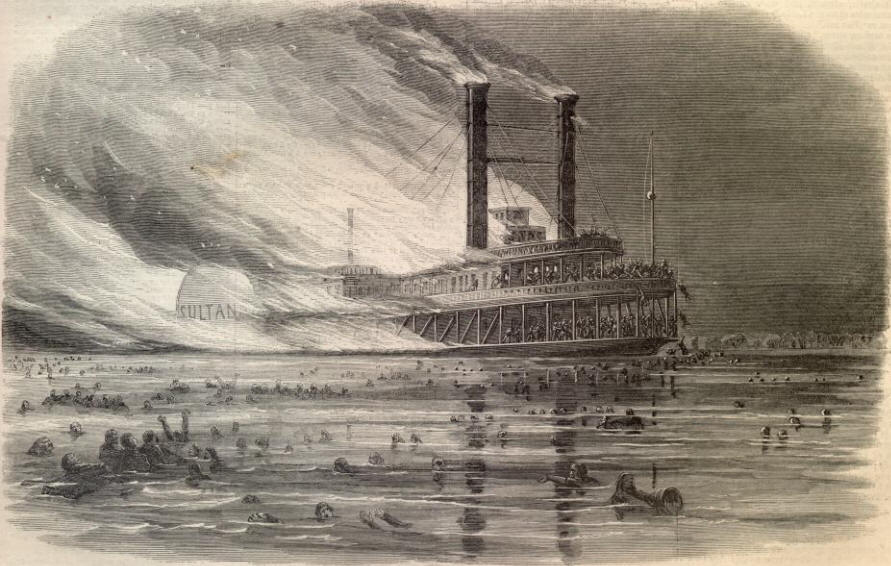
At the time of the attack, tensions between white settlers in the area and the Cherokee nation were at an all time high. A recent land grab by the white settlers had enraged the Cherokee, resulting in the formation of an alliance between the Chickamaugas (a rogue band of Cherokee warriors from the vicinity of present-day Chattanooga) and the Creek tribes of that area. A large contingent of warriors under the leadership of Cherokee chief John Watts crossed the Tennessee River on Setember 24 and marched toward Knoxville. Their intent was to attack James White Fort, the original settlement around which the city was founded. At the time of the proposed attack, there were only about forty men occupying White's fort; an attack under such conditions would have been devastating to the fledgling settlement. Watt’s large group of warriors circumvented General John Sevier’s force of about 400 cavalry stationed at Ish’s Fort; and ultimately stopped within sight of Cavett’s Station, about 8 miles west of Knoxville. There Watts became embroiled in a bitter disagreement with some of his more ruthless chiefs, particularly the war chieftan Doublehead, who strongly favored eliminating every white settler they happened upon in the valley. (Watts was of the opinion that they should limit their attacks to the main settlements and that only the men should be killed).
It was eventually agreed that the contingent would launch an attack on Cavett’s Station. At the time, only Alexander Cavett, two unrelated men and Cavett's family (totaling 13 people in all) were present at the fort. Though Cavett and the other two men were reportedly the only capable riflemen, they apparently put up a fierce resistance, killing or wounding at least five warriors from the Cherokee contingent. The attack eventually subsided and the Indians asked for a parley. It was agreed that if the settlers were to give up resistance and lay down their weapons, their lives would be spared and they would subsequently be exchanged for a like number of Cherokee held prisoner by local militia. The settlers agreed, but as soon as they exited the fort, Doublehead and his warriors broke the parley and set upon the prisoners, brutally murdering every last man, woman and child. John Watts attempted to spare one small child from the fort, but Doublehead himself leapt upon the boy and split the child's skull with a tomahawk. (Due to his reputation for fierceness, Doublehead had previously been nicknamed “man-killer” by his warriors. However, as a mark of derision for his actions at Cavett’s Station, Watts would henceforth refer to Doublehead as “baby-killer” for the remainder of his life.) According to a later witness of the scene, the murdered family members were horribly mutilated and their bodies strewn about the area. However, their tragic deaths were not in vain. The unexpected resistance of the little group at the fort had so delayed the main Cherokee force and sown further division among their ranks that the imminent attack upon Knoxville was summarily abandoned; quite possibly saving the town from being completely wiped out
The old Mars Hill Cemetery sits atop a little rise at the location of Alexander’s original settlement. A historical marker, erected in 1921 by the Tennessee Chapter of the Sons of the Revolution, sits directly upon the location of the Cavett home and marks a mass grave containing the remains of the settlers killed during the massacre. Several subsequent generations of prominent local families, including the Lonases, Roberts and Walkers were later interred at the site. The property is apparently now privately owned and sits immediately adjacent to a residence and outbuilding. The cemetery has fallen into disrepair, and junk from the neighboring house has unfortunately been strewn about the site. However, despite the distractions of the house and an adjacent subdivision (aptly named directly for the settlement) one can still stand on the little rise and, with some imagination, muster an impression of how the location may have looked, as well as how isolated it must have felt, back in the days when Knoxville perched on our nation's far western frontier.
Directions to the site: Driving north on Walker Springs Road from Kingston Pike, turn right onto Broome Road (about 100 yards past the entrance for Wal-Mart on your left). Travel approximately 1/4 mile and just past the Cavett's Station neighborhood, you will see a private drive on your right. Turn in here. The cemetery is immediately to the rear of the house. (Stop and ask at the residence before visiting the site, of course). Once in the cemetery, look down across the sloping field to the east and try to imagine 1000 Cherokee warriors converging on you, your home and your family. Trust me, even with all the modern development in the area, it's still a very sobering experience.
Note: The Cavett's Station chapter of the DAR recently hosted a clean up day at the cemetery, which also involved local scout troops. The site looks much better and apparently an agreement has been reached to maintain the site on a regular basis.


